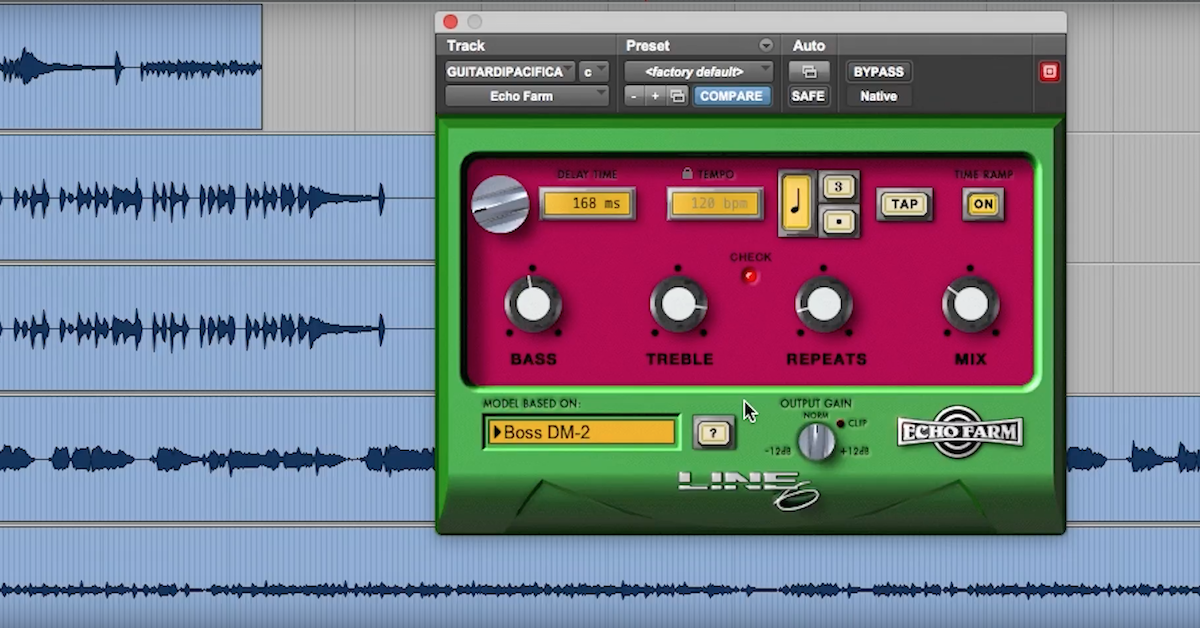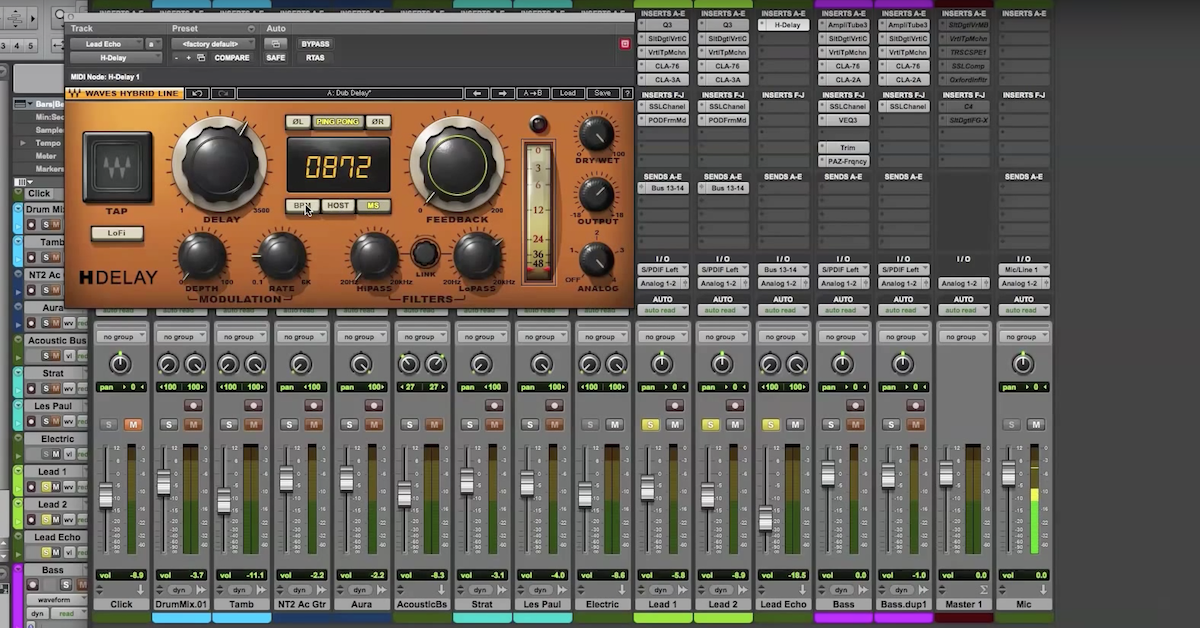Mixing with Delay: Essential Techniques
It’s a plugin that is a real tonebox. Lots of flavor. It’s been used on lots of commercial recordings and many hits. We’re going to be exploring three different approaches for using delay, specifically, how to add more depth to your mix, how to add more excitement to your mix, and how to contour a vocal performance for a section of the song. Let’s get started.
Now, delay has an advantage over say, a reverb, because it doesn’t suck up so much space in the mix. A great example, this is on the lead vocal. A lot of mix engineers would put a reverb on there, but it’s often a great place to use delay.
[mix]
Now for this application, I really like the ping pong delay. It gets a really nice stereo sound, and I can just sneak it in right underneath the dry vocal. The dry vocal is down the middle, the delay is out to the side, and it does a really nice job supporting that dry vocal.
Here’s an example without any stereo spread, and we can see why it doesn’t really quite work as well because it’s fighting with the dry vocal.
[mix, mono delay]
You can hear without the stereo spread, the delay is just right there, right next to the dry vocal.
That may be okay, but if we use the stereo spreading, we can use less of the effect, and have more room for other elements in the mix.
If you want kind of a retro sound, maybe something like the RE-101 would be a better fit. Now, the trick is to really make sure that the sound of the delay doesn’t crowd the sound of the dry vocal, and for that, I like to compliment the sound of the dry vocal with the sound of the delay.
So if the vocal has kind of a very harsh, nasally tone, very raspy tone, then maybe I can use a warmer delay to compliment that sound of the dry vocal. And of course, using this contrasting approach allows more room to place things down the middle of the mix. Let’s check it out.
[song, delay wider]
So there’s a lot of character in this delay, and it’s such that you can really use it in a very subtle way to support the main vocal, or you can ride the levels a little bit hotter and use it as a really nice character sound for your main vocal track.
The next approach for using delay is to use it for excitement, and this for me is all about emulating a room microphone. So real quick delay times, we’re not looking to add a rhythmic element to this. We want something real quick to hug the back of the transients. So in this particular arrangement in here, we can use it on electric guitar, and we can use it on the drums. Let’s check it out.
[mix, short delay]
So we could really hear that it’s not just a guitar down the middle, it’s a guitar with some other room sound going on. Of course, it’s not a room mic, but we’re using the delay and panning to emulate the sound of the room mic, that man, this is just a rocking band in a room. We’re really taking the listener to a place that makes the music sound a lot more exciting and lifelike.
The next step would be the drums. I mean, we’ve got to have something on the drums to really bring them out of a flat sound. For drums, I’m also using an EP-1, and I’m really cranking up this wow and flutter here. I think it’s a really cool effect, instead of it just being a clean delay, it has a bit of a different sound to it that really makes it unique and interesting.
[mix, drum delay]
Now a lot of times, what I’m doing is just listening to how audible this effect is in the mix. A lot of times, it’d probably be the hi-hat, maybe the snare drum would cue me in as to how loud this effect actually is. You really always have to listen in the context of the mix to decide how loud this effect should be, and for this mix right now, I think I like it about where it’s at.
There is something interesting happening here, as we cranked this up quite a bit, we can hear that there was some guitar in this effect as well. That’s because these tracks were recorded live. It’s not a mistake of sending the guitar track to the wrong buss here, but it’s a fact that these are kind of a combination of guitar and drums, all in one room, performing together.
We already panned a guitar effect to the left, and we get kind of a bonus effect, because it was there on the live performance to musicians in a room, and that’s coming in on the right.
A third way we could use delay is to bring attention to the very last word of a vocal line. It’s a great way to segue into a chorus, or maybe a bridge.
[music, delay segue]
So for this application, I’m using the Deluxe Memory Man. I really like the stereo spreading and just the sound of the delay.
Now, for this, the mod depth really doesn’t have to be turned up that much at all. It’s just a little bit, and it really goes a long way, but I really liked the sound of the Deluxe Memory Man. I like how it trails off. I think it’s a very mixable sound.
Now, for this song, we didn’t track to a click, so I had to do this by ear at 388 milliseconds, but if you do track to Pro Tools with the click on, then you can tempo sync this, and this makes for a really quick setup of the delay.
So it was a lot of flavor going on here in Echo Farm, and again, it’s now available for native Pro Tools systems as an AAX plugin. So if you’d like to see any more tutorials that I do, I’m at creativesoundlab.tv, sonicscoop.com, and a big thanks to Line 6. Talk to you soon!





